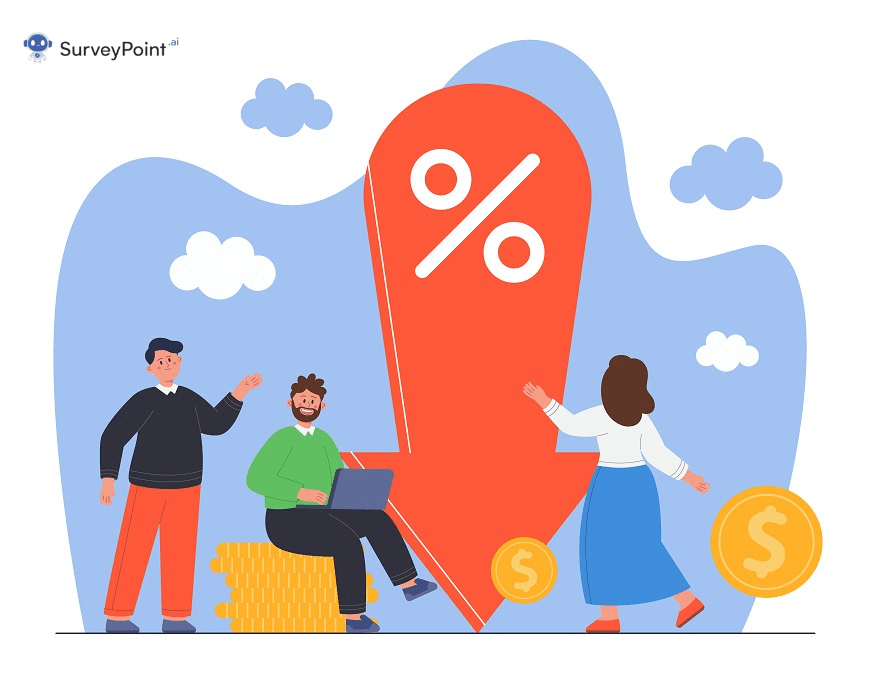
Price sensitivity is a tool businesses use to decide the correct pricing for their products. In a volatile market, prices fluctuate constantly. But in a stable market, there is scope for firms to earn higher profits. At what pricing will the highest number of consumers be willing to buy a product or service?
Answering this question can help a firm become the market leader. Price sensitivity analysis gives firms an idea of how consumers react to price change.
What is Price Sensitivity?
The goal of studying price sensitivity is to predict better and comprehend how consumers will react to price shifts in the future. If a watchmaker sells 10 watches weekly at 100 INR, how many will they move if the price decreases to 50 INR or rises to 150 INR?
What is the answer to this problem? Price Sensitivity.
Price Sensitivity is also known as the “price elasticity of demand” because of this. This analysis helps businesses set prices that bring in the most money.
There is intense price competition among numerous companies. Consumers will go for the less expensive option if they choose between two similar but interchangeable products. An item’s demand will decline if its price remains unchanged despite all other circumstances changing. Yet, this rule does not apply to expensive items like diamonds and yachts. That’s why it needs to be clarified how a price shift affects consumer demand.
Different products respond differently to price changes. Calculating price sensitivity, however, allows one to assess the market’s responsiveness to the price adjustment. By gaining insight into how consumers’ perceptions of value are influenced by pricing, businesses may better position their offerings in the market.
Consumers’ decision-making process is vital to comprehending the importance of price sensitivity.
RELATED: All About Pricing Surveys in 2023— Types, Pros, and Cons
Role of Price Sensitivity in Consumer Decision-Making Process
There are 5 stages of the consumer decision-making process.
- Recognition: A consumer becomes aware of their motivation to buy something. This can be a result of social pressure or marketing nudges. But for the first time, the consumer recognizes that they “want” to buy a product or a service. For example, if you see an Ad for a new iPhone and want to buy it.
- Information Seeking: The consumer starts collecting more information about a product. This is the stage where a consumer will begin reading more about technical upgrades and added features of the new iPhone.
- Deliberation: With all the information in mind, the consumer must now think about all aspects of a product. Price is one such aspect. That’s why when a consumer looks at the cool features of the new iPhone, they also think about whether it’s worth paying for such an upgrade.
- Purchase: The consumer finally decides to buy a product and does so.
- Subsequent Purchase: If the new iPhone is below average, the consumer would be hesitant before buying the next model. In the worth case scenario, they’d want to return or claim a refund if they regret the buying decision.
RELATED: Unlocking the Power of Behavioral Segmentation: Types and Steps
Methods to Measure Price Sensitivity
Consumers are often unaware of their willingness to pay for specific products. This is why we often end up buying products we don’t need. So, asking potential customers how much they’d pay for a product is going to give bad results. That’s why experts have developed the following methodologies of Price Sensitivity research.
Price Laddering Method
The price laddering method asks potential customers to rate their willingness to buy a product on a scale of 0-10.
This question is asked thrice by assigning different prices to the same product. The number of responses is limited to 3 to avoid excessive response bias.
Van Westendrop Method
Van Westendrop Method uses ranges to understand consumers’ willingness to buy a product. It involves asking consumers four questions regarding the price at which they would consider a product too expensive, too cheap, a great deal, and something to consider.
This helps marketers and firms understand the price at which consumers will most likely buy their products. It is used chiefly for pricing new products.
Gabor Granger Pricing Technique
Gabor granger’s pricing technique involves showing consumers a product with an assigned price. If the consumer is willing to pay the given price for a product, they are shown a higher price and asked the same question again.
In case the consumer is unwilling to pay the initial price, they are shown a lower price for the same product. This activity is iterated until the highest price a consumer is willing to pay for the product is determined. Existing products are often priced using this technique.
RELATED: Discover the Best AI Chatbot Solutions for Your Business
How to Calculate Price Sensitivity?
Price sensitivity can be calculated by using the following formula:
Price Sensitivity = % Change in Demand / % Change in Supply
Let’s put the above formula as an example. Assume that the price of apples has increased by 50%, but the sales have decreased by 25%, then we can calculate Apple’s Price Sensitivity.
Price Sensitivity = -25 / 50 = -0.5
For every percentage point change in the apple price, the demand for apple changes by half a percent. By taking the above example, we can calculate how the difference in price for different products impacts the market for those products.
If the price change is minimal, but the difference in demand is a lot, then the given product is price sensitive. Thus, price sensitivity analysis gives us a clear idea of the relationship between the change in price and the change in demand.
Learn to work smarter, not harder!
Explore our solutions that help researchers collect accurate insights, boost ROI, and retain respondents.
Free Trial • No Payment Details Required • Cancel Anytime


